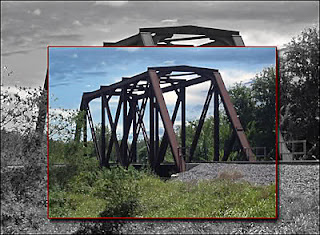This lovely image was taken at the Santa Clara ranch in far south Texas and is the result of treating "retirement as a contact sport" which so many of my fine students have done!
"I view retirement as a positive thing – a stage in life where you can change gears, reflect on what you have accomplished, and then embark on the next stage of your career. Retirement is not for everyone – we all know of a few individuals who have stayed in their jobs or professions well into their later years, some with very productive and satisfying outcomes (but many others who should have quit years earlier). But there are far too many of us who regard retirement as the end of our 'productive' years and who do nothing truly enriching, just putting in time until the inevitable end. I think this is a pity – too much good living going to waste. I want to tell the story of how I have managed my retirement.
I was educated and trained as a physician; my specialty was general surgery. I am fortunate in that I have been happily married for 49.5 years, have raised 3 successful sons who have given us 7 fine grandchildren. My practice was successful professionally and financially. By the age of 60 I had accomplished almost everything I wanted to do surgically, and decided then that I wanted to retire at 65 while my skills were still strong – to quit at the top of my game, so to speak. I realize that not everyone has the luxury of being able to do this, but most people who have a steady vocation together with pension, savings etc. can do this. This is the first lesson I wish to convey – plan your retirement well in advance.
I took a young surgeon into the practice, and then another. This gave me a smooth transition into retirement – these younger surgeons took all my night and weekend calls and I helped then prepare for the time they would take over the practice. I retired at 65, 12 ½ years ago. My former practice is doing very well to this day, I’m proud to say.
Five years before I retired I began to work with wood as a hobby. Very soon I developed a passion for woodturning, where you create pieces of wood art on a lathe. This is not a naturally acquired skill set: not something you can learn from a book. I spent a lot of time and effort traveling to instructional courses around the country until I had learned enough and practiced enough to become what is known as a 'self-directed artist', which means that I no longer needed a teacher to produce quality work. By retirement time I had reached this level.


I still learn something every time I turn on the lathe – the learning part is what keeps it fun. I have sold a few pieces, but I don’t like the selling part. I did it just to prove that I was making pieces that people would pay green money for, i.e., to validate the quality of my work. In this way, I am under no pressure to produce pieces for a show or a gallery (galleries are fun to visit, but from the artist’s perspective they are a real pain. Ever seen an 'artist’s statement'? I think they are written with a shovel!!). I keep most of my pieces, and give some to my family and friends (they have to be really good friends!). And this is the second lesson about retirement – you don’t retire FROM something, you retire TO something.
There is one more thing to tell. I have played golf, rather poorly, since I was 35. I enjoy it despite the fact that I break 90 only rarely. I also have a bad back and neck – something acquired from years standing and bending at the operating table. About a year ago, the pain of swinging and walking about the course made me realize that my golfing days were over. Coincident with this came the realization that I no longer could spend many hours at a time at the lathe.
So… I needed a new interest, and I found it in digital photography. I joined a camera club and am taking classes in photo imaging. I now have an interest that I can handle physically, and I am still learning and making nice things.
My interest in photography lead me to the Heard Camera Club here in Dallas. Our group took a trip to Santa Clara ranch in far south Texas where I took the image of the redbird at the beginning of this post.
The picture you see below was taken at Caddo Lake.
Caddo Lake is the largest natural fresh water lake in the South. It covers 26,800 acres in Texas and Louisiana and includes the 13th Ramsar Wetland Site, which is considered a wetland of international importance. Caddo Lake contains a mature flooded bald cypress forest that supports a diversity of wildlife--some endangered or vulnerable--and contains indigenous fish that contribute to global biological diversity. The lake also provides a critical support to birds that migrate through the Central Flyway. Caddo Lake is a lake with a lot of history and a unique and mysterious beauty. Needless to say, this lake is a prime destination for nature photographers.

This is the third lesson about retirement -- Age is eventually going to catch up with you – don’t fight it, ADAPT to it.
You work too long and too hard to reach retirement time to waste that time doing nothing meaningful. Plan for retirement and enjoy it. Carpe Diem!" ~Larry Genender









































